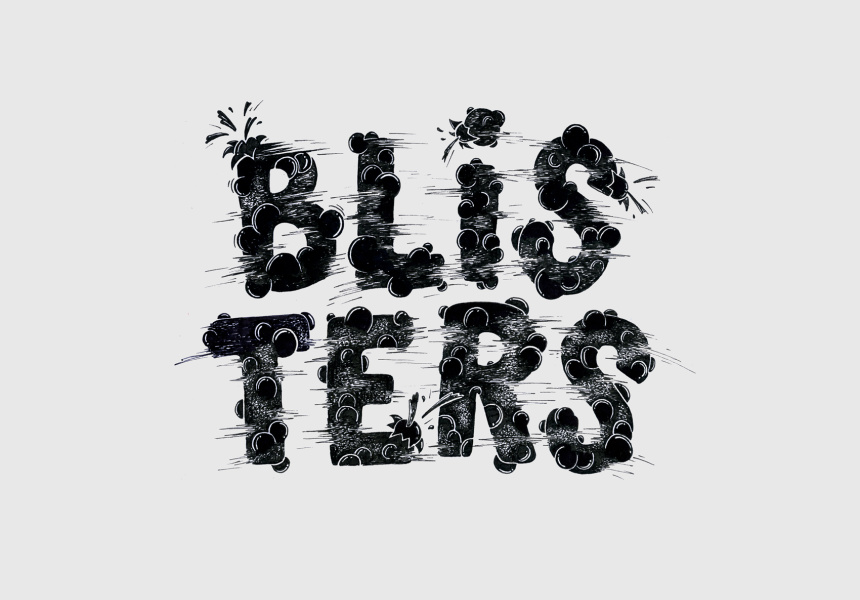One of the most difficult stages of a creative career is being a graduate – leaving the cocoon of support at university and launching into the professional world. You need to figure out fast how to get noticed. Bonnie Abbott, editor of Australian design and culture magazine Desktop, thought collecting, in a book, a number of graphic design, digital, photography, type and illustration graduates poised to make an impact would be helpful for students and the industry.
Broadsheet spoke to Abbott in the last week of the Pozible campaign raising money to get Semi-Precious: 29 graduates who will change the creative industry, printed.
Broadsheet: I imagine choosing the students for this book would have been a really difficult process. Can you go through how it worked practically?
We think you might like Access. For $12 a month, join our membership program to stay in the know.
SIGN UPBonnie Abbott: We made a basic list of great students from the portfolio section of our website, the emerging category of our Create Design Awards [annual awards for the design industry, presented by Desktop], recommendations from the industry and universities and a few student recommendations. We’ve had some people who have been awarded and recognised in other ways that aren’t in the book and that concerns them, [but] this is more about looking for a way to discuss the future of design. We’re looking for students with a certain quality when it comes to potential. [We’re looking for] gumption, energy for self-initiated work and through this kind work, discuss how they could impact the industry.
BS: Could you describe any commonalities between the students? In what ways do you think they will change the industry?
BA: Most of the time we didn’t know what we were looking for. We’d be struck by something we hadn’t seen before, or it could be representative of a trend or a new way of doing things, where the student is part of a wider change. It’s been interesting to see the way that digital [design] is being used in a self-initiated way. Students have been experimenting online because there aren’t any material costs. They’ve been a lot more open and energetic, forming their ideas in real time, online.
There are students who should make professional designers nervous. They’ve generated amazing portfolios. Whether they are commercial portfolios or not, it’s astounding, accomplished work. In another 10 years, they’re going to be leaders in their fields. It makes me nervous – I’m going to be working for these kids!
BS: I’m sure they’d be flattered to hear that.
BA: I think some know it (laughs)!
BS: Who are some of the students included in Semi-Precious that stand out to you?
BA: Dylan McDonough, he’s a Monash graduate and is also designing the actual book. We’ve been working together on it and I’ve been astounded at how hard he works. He’s always willing to do more, to test himself and test me, as well. For someone who is young and new to the industry, his command and confidence is incredible. His work is great but it’s his ability to translate it into something clients and designers can get excited about.
Phebe Shmidt and Prue Stent are also doing really incredible work and both are already making a big dent in the industry. [Their work] has a freshness to it, it’s exciting.
BS: Can you talk to me a little about the design industry at the moment?
BA: It’s really hard, there are far more graduates than there are jobs. Studios themselves are in a bit of trouble; work is scarce, they’re trying to run a business and it’s difficult for them to take on graduates because they are not super productive and have to be trained. As much as they want to, it’s hard for them to afford it.
Part of the purpose of this book is to show that these aren’t just graduates that don’t know anything. Being disconnected from the industry, they’re presenting unusual or new ideas, which might seem reckless and experimental at first but can be turned into something more sellable. These graduates represent a new generation coming through, who are immensely powerful. [This book is the industry’s] connection to them.
BS: What advice would you give to design students looking for jobs?
BA: Having an online presence and coupling that with a physical presence.
So much work I commission for the magazine comes from Instagram and Twitter. It’s part of your daily diet of what you consume visually. So if they have your attention for that split second, every day for two months, it’s a really good way to get noticed.
BS: What are you doing to spread the word about the campaign?
BA: All the graduates who are featured want it to happen as well. A lot of people have taken it upon themselves to get the word out individually which is wonderful, because it lends it so much integrity when people who are in it want it to happen. It’s taken on a bit of a life of its own; it’s self-generating.
If we get the funding, and it all goes through, we want to launch it at the Create Awards on October 30. We’ve got a week left of the Pozible campaign. If that works, we’re pretty much ready to go to print. Pledgers will have it by November, but if they come to the Create Awards they can get it in October.
desktopmag.com.au/news/semi-precious-is-here-but-we-need-your-help



